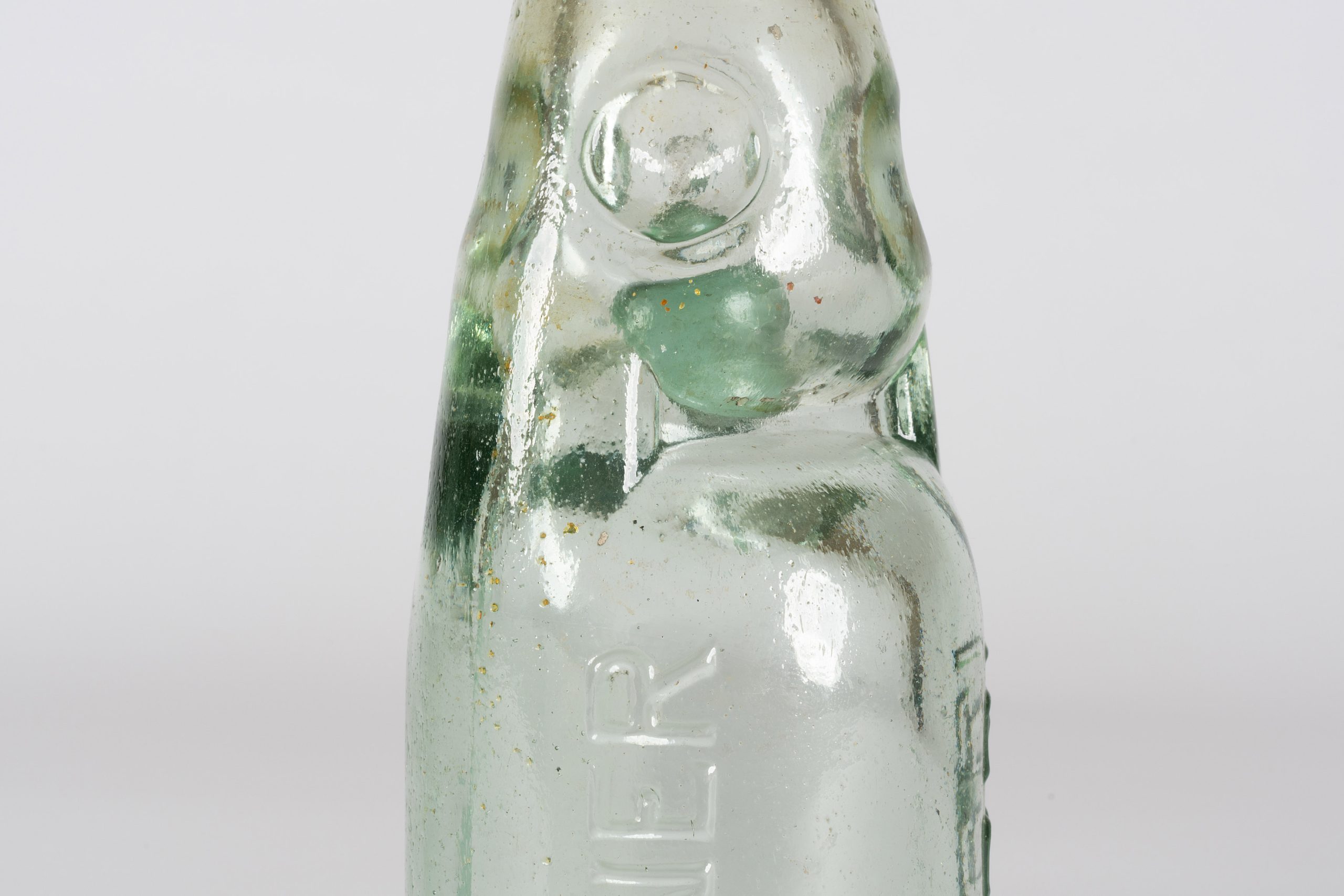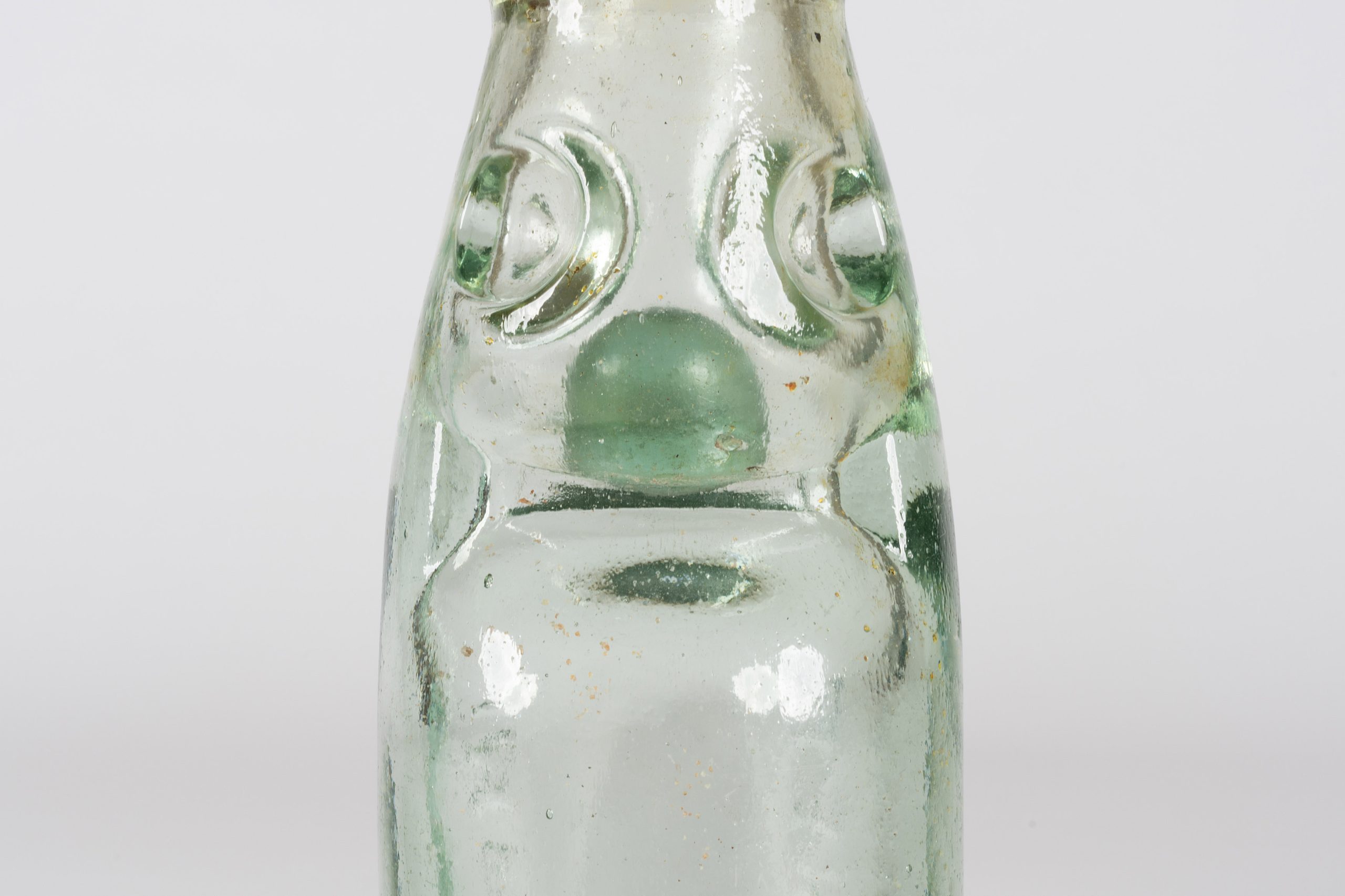Fizz Games
The Brillance of Codd-neck Bottles
In the 1870s, an English engineer and inventor, Hiram Codd (1838-1887), designed and patented an ingenious bottle design for fizzy drinks. Codd’s design ensured drinks would stay fizzy thanks to thick glass walls and a pinched neck holding a glass marble.
To work, this style of bottle was filled upside down. When full, the pressure of the drink’s carbonation pressed the glass marble against a rubber washer which sealed it shut. To open the bottle, the marble was pressed downwards and caught by an internal chamber. A dimple in this glass chamber would catch the marble when turned a certain way and ensured the drink could be poured.
These particular Codd-neck bottles are unique as they have four dimples which allowed for the drink to be poured in any direction. This version was invented by John William Dobson in 1885 and was known as the ‘Four-Way Patent’ or the ‘all-way pour.’
The bottles are marked, ‘FAULKNER/NARRABRI,’ indicating that these bottles contained beverages produced by Septimus Faulkner of Narrabri, in central-west NSW. Faulkners Cordial Factory and Ice Works was established in 1891 and produced ice, cordials, and fizzy drinks well into the twentieth century.
It was during this time that these bottles would have been made, filled, opened, and enjoyed by Narrabri locals. Many Codd-neck bottles were broken so that children could play with the marbles inside, making it even more remarkable that these bottles have survived for around one hundred years.











